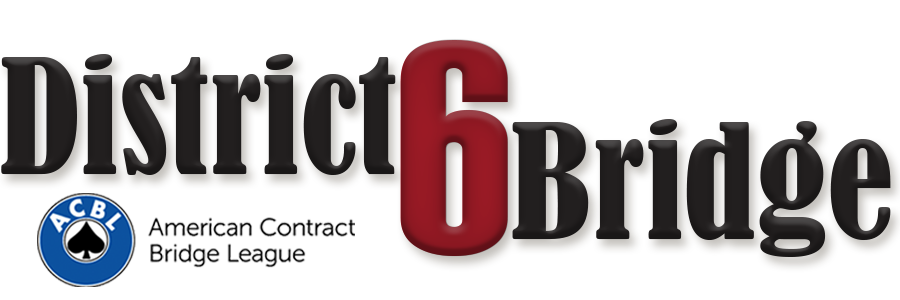I asked the experts the following question: You hold S32AKxxxAQxxxx. You open 1H, LHO bids 4S: and partner doubles. What is the minimum change that you would make to the above hand where you would remove partner’s double. Since this is a generic question, you may give me different answers based on vulnerability and type of game. You may also give me what variables you use to remove partner’s double.
In order to answer the question, one has to know what types of hands partner might have to double 4S:. Can you double 4S holding S:AQJ10xxxxxxxxx or should you have: S:xxQJxKxxxAKxx? There’s a big difference between the two hands. A few experts rarely pull the double.
Kit Woolsey: I play the double of 4S basically as penalties, so I would need something pretty remarkable to remove it — maybe:
S:–H:AKQxxxKQJxxxx.
David Bird: I would pass partner’s double on this hand and on almost any hand close to S:32AKxxxAQxxxx. I would need to be 6-5 in my suits before removing it.
But, aren’t you more likely to have a balanced 12-count then very good spades? Since most 4S bids are made with good suits, the balanced 12-count is more likely. The experts expect the doubler to have aces and kings, not spade values. S:xxQJxKxxxAKxx for instance. So what hands do experts have where they pull the double of 4S?
Joel Wooldrige: One of the agreements I have with many of my partners is that double of 4S is penalty. So, partner could be doubling on KJx of spades (for instance) and pretty much out. If, however, you’re playing the more standard version of double here, guaranteeing some convertible values, then all I’d need changed would be either make one spade a heart, and one club a diamond, or make one spade a diamond and the other spade a club. With those hands, I’d bid 4NT or 5D only if I was red against white. At equal vulnerability, I’d convert to 5D only with the 6-5 hand and at matchpoints. The variables I used to remove partner’s doubles are pretty much: I need to have either ten cards in two suits or 5-4-4 to even start thinking about it. After that, I use judgment.
If the 4-bidder has eight tricks and you can make an eleven trick contract, passing the double at IMPs will be OK unless you’re vulnerable and they’re not. Losing three or four IMPs (+300 vs +450) is not a big swing. At matchpoints, where there is a big difference between +300 and +450, you might pull more often.
Barry Rigal: With 5-5 shape I’d pull. With 6-4 shape and the values in the suit I’d probably pull. So make the small spade into either a heart or a diamond — but not a club — and I’d remove to 5D or 4NT as the case might be, the latter suggesting a two suiter with 6-4 pattern. With 7-2-2-2 I might pass but with a singleton spade I might bid.
If you pull, it’s important for partner to know your distribution. If you would pull with both SxAKJxxxAKxxxx and S:xAKJxxAKxxxxx, you want to get to the correct red suit if partner has two hearts and three diamonds. 4NT is for takeout and shows, when you correct clubs to diamonds, six hearts and four diamonds. Bidding 5D: directly shows 5-5.
Bobby Wolff: I would pass with the problem hand as is, but bid 5D if I had the fifth diamond. Maybe a small case for passing is that we bid hearts and also, of course, prefer the lead. What does that mean? Well maybe another four or five % in favor of passing as against another random ace and king lead instead of the heart lead. Of course you might say that the wily opponent expected a heart lead so we go la ronde.
With S:xJxxxxAKQxxAx, Wolff would be more likely to pull since a heart lead could be disastrous.
Marty Bergen: I like to play that responder’s double 100% denies a spade void. As opener, I would pull with any hand containing a void. I would also pull with 5-5. At favorable, I would always pull with a stiff spade.
Jill Meyers: I would have to have a very distributional hand without quick tricks to pull (e.g. S:voidKQJTxxxKQxxxx.
Eddie Kantar: I avoid pulling doubles with balanced hands. I would need a singleton or void in the opponent’s suit or a side five-card suit to consider pulling the double regardless of the vulnerability.
Nick Nickell: This hand is one card away from a totally balanced minimum. It also has H:AKAQ, which is good for defense. To pull, I would want to have a fifth diamond and a singleton spade. With a stiff club instead, I would pass, but would pull if you gave me some interior solidity to my suits, such as AKJxx of hearts and AQ109x of diamonds.
Spade shortness makes a big difference. S:xAKxxxAKJxxxx is a pull while S:xxAKxxx:DAKxxxx is a sit.
Henry Bethe: Typically I would remove if my offensive potential far exceeded my defense. This could be because I have extra shape, e.g. the S2 becomes a red two although the D2 would be more of a cause for removal. Alternatively, I would remove because I have poor defensive values for an opening bid, e.g. S:xKQxxxKQxxxxx. Since I am typically a fairly sound opener, the primary reason to bid is that I think I will make a five-level contract opposite a spread-out fairly balanced 10 or 11 count which is what I expect from partner.
Steve Bloom: Vulnerability is not a big factor. Certainly it is more tempting to defend at favorable vulnerability, but LHO can see the colors, and still bid 4S. Partner’s double essentially means that this is our hand. It is not a request to pass or to bid on. Partner is unlikely to be very short in spades, so I would always defend with two spades in hand.
Finally, my decision will be based primarily on shape, so I won’t change any honor cards. Change a spade to a diamond, and I would bid 5D. Change a spade to a heart, and the decision is very close between pass and 4NT. With that hand my choice would probably depend on mood, day of the week, table feel, and form of game/vulnerability. Give me a spade void, and I would always bid.
Kerry Sanborn: The minimum change I would make would be to add a diamond and subtract any black card.
Peter Weichsel: I would bid if the two of spades became the two of diamonds. At all games, all vulnerabilities. I, naturally, presume that double shows convertible values.
Zeke Jabbour: Five-level decisions are among the most difficult and understudied in bridge. Nobody, of course, would pull with the hand shown. The doubleton spade is highly unattractive. Even the addition of a diamond wouldn’t induce me to pull, unless I held a singleton spade. Hands with these auctions tend to break badly. So, in order to pull I need shape, working values, and either short or long spades. Unfavorable vulnerability would encourage me to risk the pull.
What this means is that the double of 4S shows general strength. You’re allowed to pull the double, but when in doubt take the plus score. This also means that when you double 4S, you should be prepared for partner to pull it. This logic is good for all high-level doubles.

